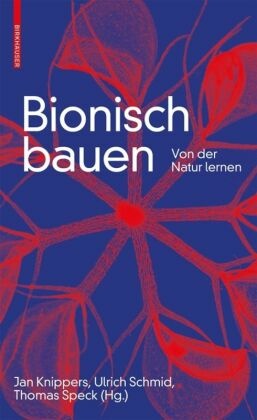| Verlag | Birkhäuser Berlin |
| Auflage | 2019 |
| Seiten | 208 |
| Format | 15,8 x 25,1 x 1,7 cm |
| Gewicht | 658 g |
| ISBN-10 | 3035617856 |
| ISBN-13 | 9783035617856 |
| Bestell-Nr | 03561785A |
Die Natur war schon immer eine Inspirationsquelle für die Gestaltung menschlicher Umwelt. Die Analyse biologischer Konstruktionen kann nicht nur zu verblüffenden technischen Lösungen führen, sie kann auch die Architektur beflügeln.
Bionik ist ein faszinierendes Grenzgebiet zwischen Grundlagenforschung und praktischer Anwendung: Biologen, Chemiker, Physiker, Mineralogen und Paläontologen kommen ins Gespräch mit Materialwissenschaftlern, Ingenieuren und Architekten und übertragen ihre Erkenntnisse in Architektur und Bauwesen.
An einer Vielzahl von Beispielen aus der Praxis verfolgt die reich illustrierte Einführung den Weg von der Erkenntnis, wie etwas funktioniert, über die Abstraktion, etwa in Computermodellen, und den Bau erster Prototypen bis zur funktionierenden Fertigung und Produktion.
Nature has always been a source of inspiration for the design of the human environment. The analysis of biological constructions can not only lead to astonishing technical solutions but can also inspire the design of architecture.
Bionics is a fascinating border area between pure research and practical application: biologists, chemists, physicists, mineralogists, and paleontologists meet up with material scientists, engineers, and architects and transfer their knowledge to architecture and construction.
Using numerous practical examples, this richly illustrated introduction traces the process from the understanding of how something functions, to abstraction-for example in computer models-and the construction of initial prototypes, through to fully functional manufacture and production.

